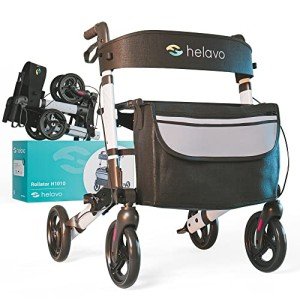Innovative Walker Design: A Leap Towards Enhanced Mobility
As the international population ages, the need for reliable mobility options has become significantly pressing. Standard walkers, while functional, are frequently slammed for being troublesome and lacking design development. However, a wave of development has actually infiltrated the marketplace, producing modern walker styles that not just accommodate the physical requirements of users however also stress style, ergonomics, and technology. This blog site post explores these groundbreaking walker styles, their features, and how they are boosting the independence of people with mobility obstacles.
The Evolution of Walker Design
Historic Perspective
Walkers have actually come a long method because their inception in the early 20th century. Initially developed as simple metal frames, these mobility help saw gradual enhancements over the decades. As awareness about ergonomics and user comfort increased, designers began presenting features that much better matched the distinct requirements of seniors and individuals with disabilities.
Existing Trends
In the last few years, innovative walker designs have utilized technology, ergonomics, and modern looks. Below are a few of the key features that are transforming the walker landscape:
| Feature | Description | Advantage |
|---|---|---|
| Lightweight Materials | Usage of materials like aluminum and composite polymers | Much easier to maneuver and transport |
| Adjustable Height | Personalized dimensions for each user | Improved convenience and suitability |
| Compact Design | Folds for easy storage and portability | Convenience for users on the go |
| Integrated Technology | Features like smart sensors and GPS | Enhanced safety and navigation |
| Trendy Aesthetics | Color choices and stylish designs | Boosts user confidence and desirability |
Innovative Features of Modern Walkers
1. Ergonomic Design
Current walker designs focus on ergonomics, guaranteeing that the height, manage grip, and overall shape accommodate the user's convenience. For circumstances, curved handles or hand grips made from soft, slip-resistant products help in reducing stress on the wrists and hands throughout usage.
2. Smart Technology
A significant trend in walker design is the integration of clever technology. Some modern walkers come equipped with sensing units that inform caregivers or member of the family if the user falls or exhibits signs of distress. Furthermore, built-in GPS technology makes it possible for users to browse unknown surfaces safely.
3. Multi-Functional Capabilities
Innovative walkers now provide extra performance beyond simply assisting with mobility. Some designs include integrated seats, storage baskets, and even cup holders. This multi-functional technique allows users to rest when required and bring necessary items, thereby promoting self-reliance.
4. Adjustable Features
The ability to individualize a walker to fit private requirements has actually become a considerable selling point. Padded Seat Rollator Walker , colorful accessories, and other adjustable elements permit users to have a walker that feels distinctively theirs.
5. Wheel Options
Some walkers now feature various wheel choices, including bigger wheels for rough terrain or smaller ones for flat surface areas. This versatility ensures that users can browse different environments without feeling unsteady or uncomfortable.
Pros and Cons of Innovative Walkers
While the improvements in walker design bring various advantages, it's necessary to think about both the benefits and downsides.
| Pros | Cons |
|---|---|
| Increased security and stability | Prospective for higher expenses |
| Greater user convenience and functionality | Some features may be unnecessary for all users |
| Stylish design options improving user spirits | Technology can be intimidating for some users |
| Improved portability and storage alternatives | Upkeep of advanced technology may be required |
Frequently Asked Questions (FAQs)
Q1: Are innovative walkers more expensive than standard walkers?
A1: Yes, innovative walkers often include higher price due to their advanced features and materials. However, the investment may be beneficial for the added security, comfort, and independence they supply.
Q2: How do I pick the best walker for my requirements?
A2: When selecting a walker, consider your everyday activities, physical capabilities, and any specific needs you might have (such as storage or technology). Attempting out various designs in-store can assist you find one that feels comfortable.
Q3: Are there walkers created specifically for seniors?
A3: Many modern walkers cater specifically to the requirements of seniors, featuring lightweight materials, ergonomic designs, and easy-to-use functionalities that improve usability.
Q4: Can walkers be used outdoors?
A4: Absolutely! Lots of innovative walkers featured bigger wheels matched for outdoor surfaces, making it easier for users to browse parks, sidewalks, and irregular ground.
Q5: Do walkers need much upkeep?
A5: Maintenance requires differ by model. Fundamental cleaning and occasional checks on wheels and mechanisms are typically sufficient. Technically advanced walkers might need software application updates or battery replacements for sensors.
The innovative walker styles presently emerging in the market are a testimony to the imaginative methods being taken to improve mobility help. These walkers not only serve their fundamental function but also enhance the user's quality of life by including security, functionality, and visual appeals into their design. As we continue to accept these advancements, it's crucial for users and caregivers alike to stay informed about their options, guaranteeing that individuals preserve their self-reliance and enjoy the freedom of motion.
With technology continuing to progress, the future of walker design appears bright, appealing enhanced solutions for mobility that deal with an ever-growing need for inclusivity and user-centered design.

